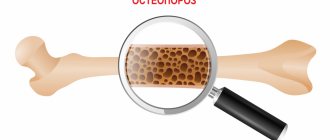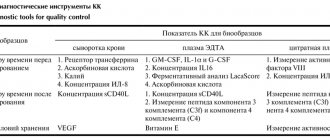Analysis number in the Science database: 131.
Alkaline phosphatase (ALP) is an enzyme belonging to the class of hydrolases that catalyzes the dephosphorylation reaction of many types of molecules, such as nucleotides, proteins and alkaloids. In humans, ALP is present in small quantities in all tissues, but especially high concentrations in the liver, bile duct, kidneys, bones and placenta. Other isoenzymes are also found:
- ALPI - intestinal,
- ALPL - nonspecific in liver, bone and kidney tissues;
- ALPP - placental.
Description
Alkaline phosphatase is present in high concentrations in the liver, bone tissue, placenta and intestinal epithelium. Each of these tissues contains specific ALP isoenzymes. A pathological increase in alkaline phosphatase activity is observed most often in cholestatic liver disease and bone diseases in which the activity of osteoblasts increases, such as Paget's disease and osteomalacia. A physiological increase in ALP activity is observed during pregnancy (due to the placental isoform of the enzyme) and in childhood, when bone growth occurs (due to the bone isoenzyme). Plasma concentrations of the enzyme are high at birth but fall rapidly thereafter. However, during childhood it remains 2–3 times higher than normal adult levels. Enzyme activity increases again during adolescence before declining to adult levels as bone growth ceases (Figure 1).
Rice. 1 — Dependence of alkaline phosphatase activity in blood serum on the age of the child. Average values shown; Peaks between 10 and 16 years of age correspond to accelerated growth during maturation and may be more than 3 times the upper normal limit for adults
The activity of alkaline phosphatase in the blood plasma of practically healthy elderly people is slightly higher than normal. This may be explained by the high incidence of mild subclinical Paget's disease in older people. ALP concentrations greater than 10 times the upper limit of normal may occur in severe Paget's disease, rickets and osteomalacia, and occasionally in cholestatic liver disease. However, these conditions are more characterized by a smaller increase in activity. ALP activity does not increase in osteoporosis unless the condition is complicated by bone collapse or fracture.
The concentration of ALP in the blood plasma usually increases with the development of malignant neoplasms of bone or liver origin, and can be associated with both primary and secondary tumors localized in these tissues. A number of tumor-specific forms of ALP, which are secreted by the tumor cells themselves, have also been described. The best known of these is the Regan isoenzyme, which is similar in thermostability to placental ALP and is found in some patients with bronchial carcinoma.
ALP activity is often measured as part of a “biochemical profile” and is often found to be elevated in the absence of clinical evidence of bone or liver disease or other biochemical abnormalities. To determine the cause of this increase, an attempt should be made to identify the tissue whose damage led to the release of the enzyme into the bloodstream. This can be done by measuring the levels of tissue-specific ALP isoenzymes, for example using electrophoresis and differential heat inactivation. A simpler but less reliable alternative is to measure the activity of γ-glutamyltransferase in plasma, an enzyme found in the liver but absent in bone tissue. Its increased activity in plasma often (but not always) coincides with an excess of hepatic alkaline phosphatase in the plasma.
Testing the level of alkaline phosphatase in the blood
Short description:
Alkaline phosphatase is an enzyme that is found in the cells of the liver and biliary tract and is a catalyst for certain biochemical reactions in these cells (it does not work in the bloodstream). When these cells are destroyed, their contents enter the bloodstream. Normally, some cells are renewed, so a certain alkaline phosphatase activity is detected in the blood. If many cells die, it can increase very significantly. In bones, alkaline phosphatase is formed in special cells - osteoblasts, which play an important role in the formation and renewal of bone tissue. The higher the activity of osteoblasts, the higher the activity of alkaline phosphatase in the blood, so in children and people who have suffered bone fractures, alkaline phosphatase activity is at a high level. Synonyms (rus): Alkaline phosphatase. Synonyms (eng): ALK PHOS, ALP, ALKP, alkaline phosphatase.
Method: Kinetic colorimetric.
Units of measurement: U/L (unit per liter).
Preparing for the study:
• Do not eat for 12 hours before the test. • Avoid physical and emotional stress 30 minutes before the test. • Do not smoke for 30 minutes before donating blood.
Type of biomaterial: Venous blood.
Type of tube: vacuum tube with clotting activator and separating gel (red cap with yellow ring).
Service price: 62 rub.
Completion time: one business day.
Reference values:
Age, gender Reference values 3 months - 1 year 122 - 469 U/l 1-10 years 142 - 335 U/l 10-13 years 129 - 417 U/l 13-15 years female 57 - 254 U/l male 116 - 468 U/l 15-17 years female 50 - 117 U/l male 82 - 331 U/l 17-19 years female 45 - 87 U/l male 55 - 149 U/l > 19 years female 35 - 105 U/l male 40 – 130 U/l
If other tests such as bilirubin, alanine aminotransferase (ALT), and aspartate aminotransferase (AST) are also elevated, then increased alkaline phosphatase activity in the blood may be due to liver damage. If calcium and phosphorus levels are altered, the most likely cause of increased alkaline phosphatase is bone pathology. Increased alkaline phosphatase activity almost always means damage or involvement in the pathological process of the liver, biliary tract or bones. Increased activities of gamma-glutamyl transpeptidase (GGT) and 5-nucleotidase indicate that the increase in alkaline phosphatase is due to damage to the biliary tract.
Reasons for increased alkaline phosphatase activity:
1. Damage to the liver and bile ducts. • Obstructive jaundice associated with obstruction of the bile ducts. o Bile duct stones, bile duct scars after surgery. o Tumors of the bile ducts. o Cancer of the head of the pancreas, stomach cancer due to mechanical compression of the common bile duct, through which bile enters the duodenum. • Liver cancer, metastases of tumors of other organs to the liver. • Liver cirrhosis is a pathological process during which normal liver tissue is replaced by scar tissue, which inhibits all liver functions. • Hepatitis of any origin (usually ALP becomes 3 times higher than normal because of it). • Infectious mononucleosis is an acute viral infection manifested by fever, inflammation of the pharynx and enlarged lymph nodes. In this case, the liver is often involved in the pathological process. • Primary biliary cirrhosis and primary sclerosing cholangitis are rare diseases that occur in adults and are associated with autoimmune damage to the bile ducts. Accompanied by extremely high activity of alkaline phosphatase and gamma-glutamyltransferase.
2. Bone damage. • Particularly high alkaline phosphatase activity (15-20 norms) is observed in Paget's disease. This is a disease that is accompanied by pathological bone growth and disruption of their structure in certain places. • Osteosarcoma. • Metastases of other tumors to the bone. • Osteomalacia – softening of bones caused by calcium deficiency.
3. Other reasons. • Hyperparathyroidism is a hormonal disease associated with excessive production of parathyroid hormone by the parathyroid glands, which leads to the leaching of calcium from the bones. • Myocardial infarction. • Ulcerative colitis, intestinal perforation (since alkaline phosphatase is also found in intestinal cells). Reasons for decreased alkaline phosphatase activity: • Severe anemia. • Massive blood transfusions. • Hypothyroidism is a condition in which the function of the thyroid gland is reduced. • Lack of magnesium and zinc. • Hypophosphatasia is a rare congenital disorder that causes softening of the bones. • A marked decrease in alkaline phosphatase in pregnant women is a sign of placental insufficiency.
Code A09.05.046
Reference values (norm)
| Age | Reference values |
| Less than 4 years | 104—345 U/l |
| 4-7 years | 93—309 U/l |
| 7-10 years | 86—315 U/l |
| 10-13 years | 42—362 U/l |
| 13-16 years old | 74—390 U/l |
| 16-18 years old | 52—171 U/l |
| Over 18 years old | 30—120 U/l |
In what cases is a study prescribed?
The analysis can be prescribed by pediatric doctors of various profiles: orthopedist, hematologist, gastroenterologist, oncologist, etc. The study is an important component of diagnosis if the child has:
- bones hurt;
- deformed bone structures;
- bones often break;
- weakness, apathy, fatigue;
- loss of appetite;
- nausea, vomiting, abdominal pain;
- jaundice;
- dark urine or light stool.
Alkaline phosphatase levels are determined during routine medical examinations of the child and in preparation for surgery. The analysis is also necessary to monitor the effectiveness of treatment of diseases of the bones, liver, kidneys, and biliary tract.
Biomaterial for research
A nurse collects biomaterial for laboratory testing. For the study, serum is used, which is obtained from venous or capillary blood. The blood is collected into a vacuum tube and then centrifuged to separate the serum. After this, the serum is collected in a clean tube and studied in the laboratory. Qualitatively selected biomaterial allows you to determine the level of alkaline phosphatase, compare the indicator with the norm, and determine the excess or deficiency of the enzyme in the body.
What do deviations of alkaline phosphatase from normal levels indicate?
Test results are not a diagnosis. To diagnose the pathology, the data obtained must be shown to the attending physician. The doctor will be able to establish a diagnosis based on a comprehensive assessment of the analysis for alkaline phosphatase, as well as other laboratory and instrumental tests.
Determining the level of alkaline phosphatase in children may show an excess of the actual value from the norm or its underestimated level. The most common causes of elevated alkaline phosphatase levels are:
- diseases of the bile ducts, liver: parasitic and infectious lesions, hepatitis, cirrhosis, oncology, tuberculosis, stones in the bile ducts and gall bladder;
- diseases of bone tissue: fractures, rickets, osteitis deformans, osteomalacia, osteosarcoma, bone metastases;
- pathologies of the blood and hematopoietic system: myeloma, lymphogranulomatosis, infectious mononucleosis, leukemia, circulatory failure;
- infarction of the kidneys, lungs, myocardium, kidneys;
- intestinal perforation, ulcerative colitis;
- cytomegalovirus infection;
- deficiency of calcium, phosphates in the diet;
- physiological characteristics of premature babies.
Causes of insufficient alkaline phosphatase levels:
- deficiency of zinc, magnesium, protein;
- low hemoglobin;
- hypovitaminosis of vitamins B12 and C;
- hypothyroidism;
- disorders in the growth and formation of bone tissue: achondroplasia, hypophosphatasia;
- hereditary hypophosphatasemia.
What is alkaline phosphatase
Phosphatase is essentially an enzyme that belongs to the category of hydrolases. This enzyme is necessary in the body because it participates in the dephospholation reaction and ensures its success. The reaction occurs at the molecular level and is the process of detaching phosphorus from certain organic substances.
Phosphatase transfers the resulting phosphorus through the cell membrane, while the levels of this substance in human blood are constant and serve to determine the level of phosphorus-calcium metabolic processes.
Alkaline phosphatase in medicine is one of the enzymes that occurs most frequently in the body, but the main mechanism of its action has not yet been fully understood. In the human body, this substance is present in almost any tissue, but it comes in several varieties, in particular, phosphatase can be placental, renal, bone, intestinal and liver.
In human blood serum, as a rule, the presence of bone and liver phosphatase is observed, while their amounts are almost always the same, and changes in one of the indicators may indicate the presence of disorders.









